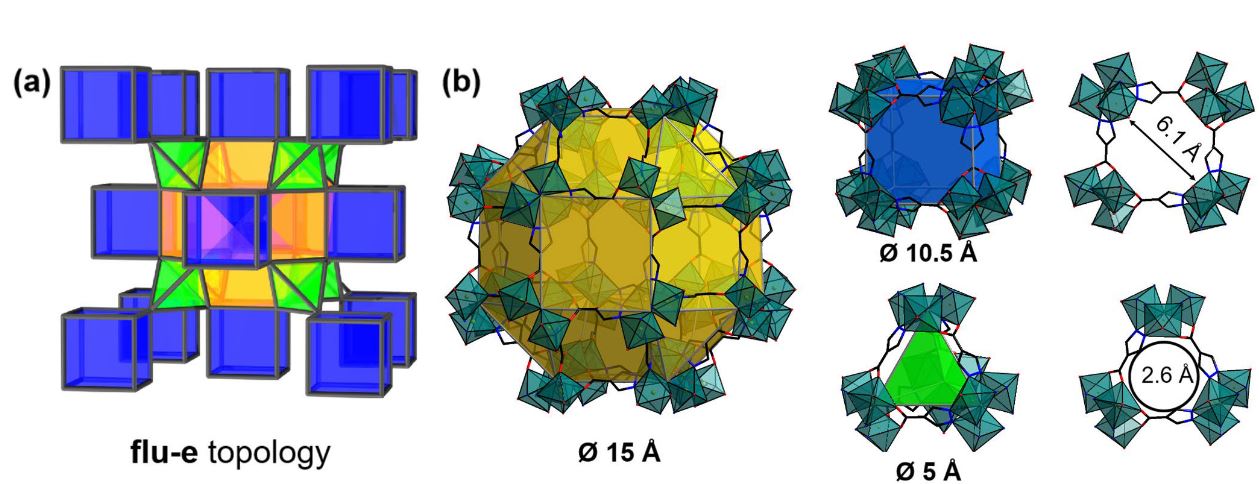
The improvement of the Total Isomerization Process (TIP) for the production of high-quality gasoline with the ultimate goal of reaching a Research Octane Number (RON) higher than 92 requires the use of specific sorbents to separate pentane and hexane isomers into classes of linear, mono- and di-branched isomers. Herein we report the design of a new multi-cage microporous Fe(III)-MOF (referred to as MIP-214, MIP stands for materials of the Institute of Porous Materials of Paris) with a flu-e topology, incorporating an asymmetric heterofunctional ditopic ligand, 4-pyrazolecarboxylic acid, that exhibits an appropriate microporous structure for a thermodynamic-controlled separation of hydrocarbon isomers. This MOF produced via a direct, scalable, and mild synthesis route was proven to encompass a unique separation of C5/C6 isomers by classes of low RON over high RON alkanes with a sorption hierarchy: (n-hexane >> n-pentane ≈ 2-methylpentane > 3-methylpentane)low RON>>(2,3-dimethylbutane ≈ i-pentane ≈ 2,2-dimethylbutane)high RON following the adsorption enthalpy sequence. We reveal for the first time that a single sorbent can efficiently separate such a complex mixture of high RON di-branched hexane and mono-branched pentane isomers from their low RON counterparts, which is a major achievement reported so far.

First published in Angewandte Chemie on 15 February 2024, here: https://doi.org/10.1002/anie.202320008
by Lin Zhou, Pedro Brantuas, Adriano Henrique, Helge Reinsch, Mohammad Wahiduzzaman, Jean-Marc Grenèche, Alirio Rodrigues, José Silva, Guillaume Maurin, Christian Serre
